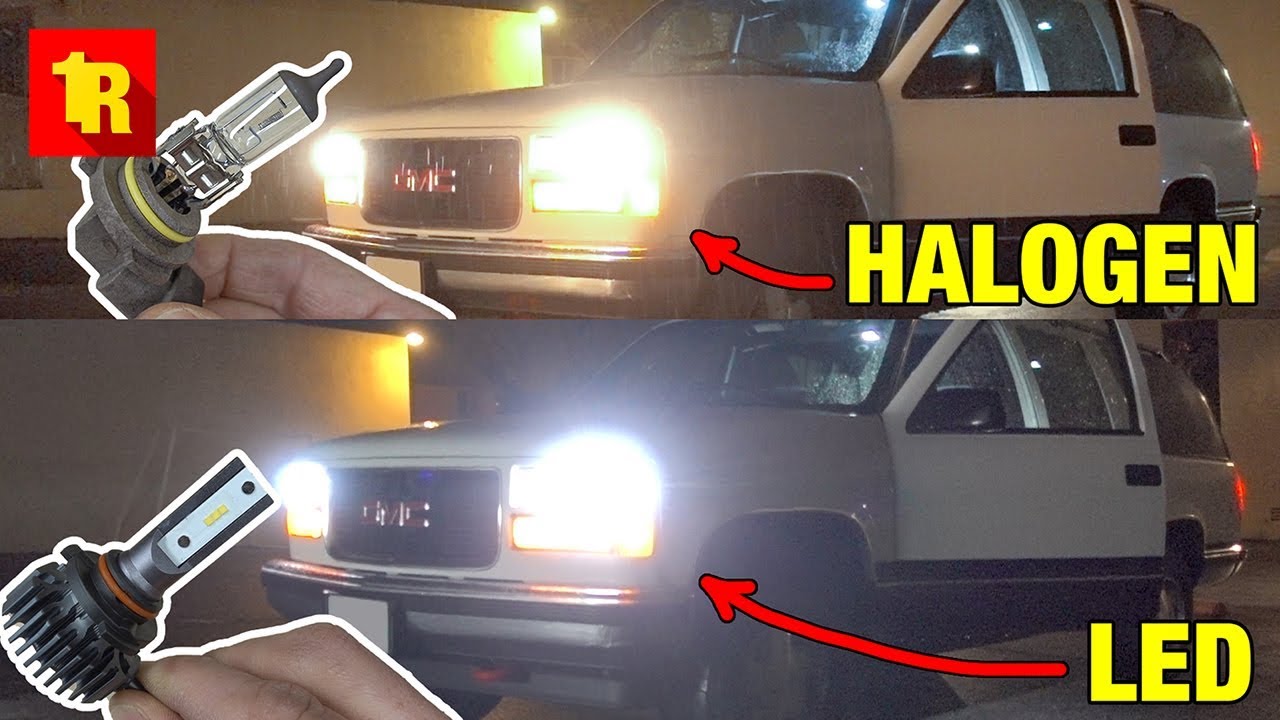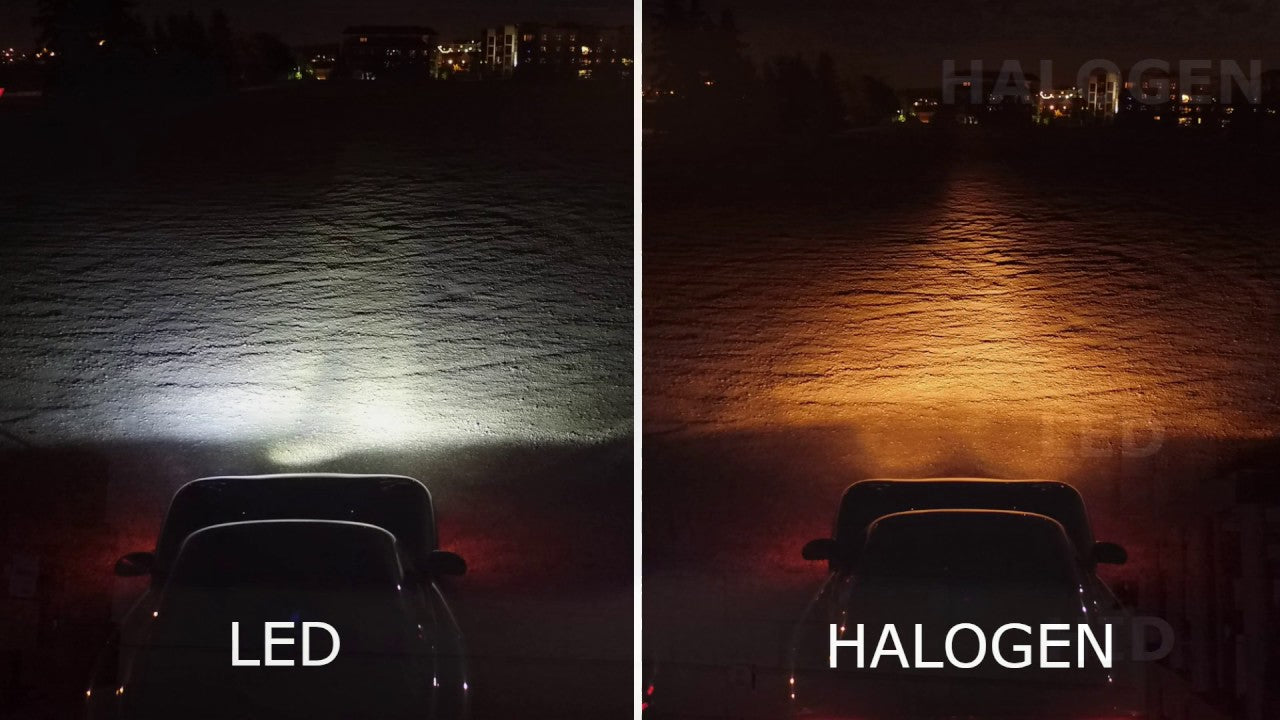The newest headlight tech, using LED and HID bulbs, aims to make headlights brighter. The idea is to allow drivers to see roads at night better than ever before. However, those extra bright headlights are causing a new phenomenon called dazzling.
It has road safety advocates, regulators in several countries, and even the UN worried. If you’ve ever wanted those super bright headlights for your vehicle, read on to find out why that might not be such a great idea:
What is Dazzling?
Think about the last time you drove your vehicle at night. The headlights of the oncoming vehicles may have been right in your face. For some drivers, bright headlights cause an almost blinding effect. This is dazzling.
Dazzling is essentially like having a big flashlight shone on your face. However, many drivers have complained that dazzling can be intensely blinding, far worse compared to being exposed to ordinary lights.
A person can recover almost instantly from accidentally looking at a light bulb, for example. When you are dazzled it can take up to 5 seconds or even more to see clearly again.
There’s another aspect to dazzling. When you are at home and accidentally look up at a headlamp above, you can avert your eyes to protect your sight. But on the road, looking away can be deadly for a driver.
On highways, incoming headlights can dazzle a driver for miles until the vehicles pass. Therefore, the effects are quite prolonged.
Why is it a Problem?
Dazzling is quite obviously dangerous. Other than being physically painful, a survey done in the UK found hundreds of motorists came to a near collision because of dazzling.
RAC, a British auto insurance company, recently surveyed of 2,061 drivers to understand the effects of dazzling. Nearly, 15 percent of those motorists said they had suffered a collision or came close to it because of dazzling.
In the US, drivers have said that dazzling prevents them from driving in the dark. A veteran driver from New York told a local paper that the near blindness caused by dazzling keeps him off the roads at night.
Other drivers echoed his sentiment on nighttime driving in the local report. In the Hudson Valley area, there are long, dark roads that make headlight glare particularly problematic.
Dazzling may specifically trouble elderly drivers. Seniors are likely to suffer from eyesight issues that dazzling can make worse.
It’s not just drivers who are affected by dazzling. Passengers certainly are exposed to bright headlights as well. Repeated exposure to intense light during drives can trigger migraines.
Overall, headlight glare complaints are on the rise globally. In the UK, RAC has called bright headlights as a “road safety risk.”
In the US, the National Highway Traffic Safety Administration has looked into thousands of complaints regarding headlight glare. Even the United Nations Working Party on Lighting and Light-Signalling (GRE) is looking into the matter.
The Surprising Cause of Dazzling
Dazzling is strongly linked to the brightness level of headlights, even when taking other factors into account. Motorists interviewed for surveys and reports singlehandedly blame headlight brightness for dazzling.
The RAC survey mentioned earlier reported that bright headlights can cause dazzling even when the angle of the lamps is dipped downward.
It’s worthwhile to ask if the structure of some roads, especially highways, can contribute to dazzling. However, people have been driving on major roads for decades. Drivers have not complained about dazzling until a few years ago.
There’s a particular reason for that. Just any type of headlight does not cause dazzling. The problem boils down to the new and improved headlights with LED and HID bulbs.
How New Headlight Tech Resulted in an Unexpected Problem
Most motorists wish to have brighter headlights to increase visibility at night. Headlight manufacturing companies have worked for years to meet these wishes and design headlamps that truly, well, dazzles.
In the past, vehicles were equipped with halogen bulbs. These headlights consume a lot of energy and emit a rather warm glow. The result is so-so visibility at night.
Newer vehicles don’t come with these halogen bulbs. The newest headlamps are equipped with LED or HID bulbs.
The LED bulbs in your car are similar to the LEDs in your house. These bulbs are known to be highly energy efficient. They can emit a brighter glow than halogens without consuming as much energy.
HID bulbs are even more intensely bright compared to LEDs. They are expensive and you usually only find HID headlights in higher-end cars.
Other than just the brightness, there’s another factor that plays a role in LEDs and HIDs causing dazzling:
- The color temperature
The color temperature or the hue of the light is distinctly different in newer headlights compared to old ones. Whereas the older halogens emitted a yellowish glow similar to daylight, newer headlights emit a cooler, whiter glow.
HID lights can be bright enough to emit a bluish hue. The cool light is really great at night for improved visibility. Unfortunately, the human eye perceives this cool light rather intensely, resulting in dazzling.
This proves a dilemma for motorists, regulators, and headlight manufacturers. The newer headlights offer drivers excellent visibility in low-light conditions, undeniably lowering the risk of collisions. At the same time, the bright lights cause dazzling, putting those on a road at a new type of risk.
How to Avoid Dazzling
Experts on the issue advice drivers and passengers to use protective eyewear to prevent getting dazzled. Rob Marshall, a British road safety advocate, and a technical consultant suggests drivers wear UV-coated glasses to prevent dazzling.
If you wear prescription glasses, you can get them coated to minimize the effects of UV light on the eyes. This benefit typically offered to reduce the glare from computer and TV screens that might give some people headaches.
As you might have guessed, it is the UV rays in newer lights that cause the dazzling. Even if you don’t wear glasses, you can buy shades with UV-absorbent coating to prevent dazzling when on the road at night.
Regulators have yet to come up with a solution to dazzling. In the meantime, a coated pair of glasses is the best we’ve got.
Buying Headlights that Prevent Dazzling
Don’t allow dazzling to immediately put you off buying bright headlights to drive better at night. While dazzling is a problem, inadequate headlights could also put you at risk of a collision due to low visibility at night.
There are already some regulations that cover how bright a headlight you can equip in your car. For example, it’s illegal in developed countries to retrofit a very old car with modern HID lights.
When you are buying newer headlights, first consider the following to protect other drivers, and yourself, against dazzling:
- Brightness in lumens
- Beam angle
- Technology that prevents glare
Current US transportation laws count the brightness of a headlight in wattage. But because modern bulbs are highly energy efficient, they can emit a brighter light even at the highest wattage limit.
Therefore, to understand how bright a headlight bulb is, check its brightness in lumens. Current regulations don’t cover how high the lumen count for headlights should be.
As a driver, it’s not wise to restrict your purchasing options to the lumen count either. Rather, advocates encourage drivers to focus on the beam angle.
To truly prevent dazzling, you must make sure your headlights are not mounted upwards in a way that causes glare. When you install headlights, they should be placed in a manner that doesn’t allow a lot of light to escape from the headlight cover.
You can check this by standing to the side of the headlights. The angle of the light should be parallel to the top of the headlight covers. It should not be tilted upwards.
Preventing misalignment in the installation is one way to prevent, or at least restrict, dazzling. The other, better recognized method is to use a tech called “adaptive driving beams.”
ADBs have been in use in Europe and Japan for over a decade. However, they are just catching the attention of regulators in the US.
Regular headlight systems can automatically switch between high and low beams. ADBs, on the other hand, use high-end tech like cameras, sensors, and data software to detect oncoming vehicles. ADBs can thus adjust the headlight beam to reduce the glare when there’s an oncoming vehicle.
American regulators are still reviewing whether ADBs should be allowed in US vehicles. Until these are approved, drivers should focus on preventing misalignment when using LED or HID headlights.




